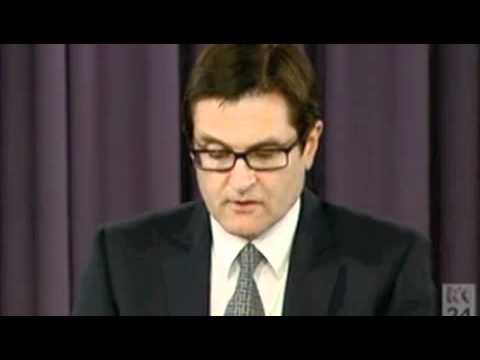
Greg Combet: The Political Economy of Carbon Pricing
Just over six weeks ago, on July 10, the Gillard Government announced a comprehensive plan for a clean energy future. This plan comprises four key elements:
* a carbon pricing mechanism that will create the incentive for businesses to cut pollution and invest in cleaner energy sources;
* strong support for renewable energy which, coupled with the carbon price and the renewable energy target, will drive $20 billion of investment in renewable energy over the next eight years and $100 billion to 2050;
* measures that will encourage improved energy efficiency within businesses and households;
* substantial measures to promote the storage of carbon through improved agricultural and land management practices.
The package is the result of intensive policy development work by the Government – indeed years of work, considering that the initial concepts for an Australian emissions trading scheme were devised during the latter period of the Howard Government, and then developed in detail in the last Parliamentary term.
So I thought that it would be timely today to review where the policy is up to, how it is tracking, and what the package will do for the Australian economy. It is also timely to dispel some of the myths propagated by the policy-free zone that is the conservative Coalition at both the Federal and state levels.
The clean energy future package rests on a set of interlocking propositions.
First, the foundation for the clean energy future package is the climate science, which I will not deal with today other than to refer those looking for an authoritative overview to the publication titled The Critical Decade – Climate Science, Risks and Responses released by the Climate Commission several months ago.
The report reinforces that there is no doubt that the climate is changing, that we are already seeing the social, economic and environmental impacts of climate change, that human activities are triggering the changes we are witnessing, and that decisions we make now to 2020 will determine the severity of climate change our children and grandchildren experience.
Second, the advice to the Government from the Commission, as well as other scientific agencies and individual scientists, demands the tackling of climate change by cutting carbon pollution in our own economy, and by playing a responsible role internationally.
And third, to respond to the science by cutting carbon pollution in our own economy, we must put in place the most cost-effective measures to achieve the reforms that are necessary at the lowest cost to businesses and households. This means that we need a market-based mechanism. The Government’s package is designed with this objective clearly in mind.
The content above from the originating party/author(s) may be of a point-in-time nature and edited for style and length. The views and opinions expressed are those of the original author(s). View original.
AusPol.co Disclaimer

